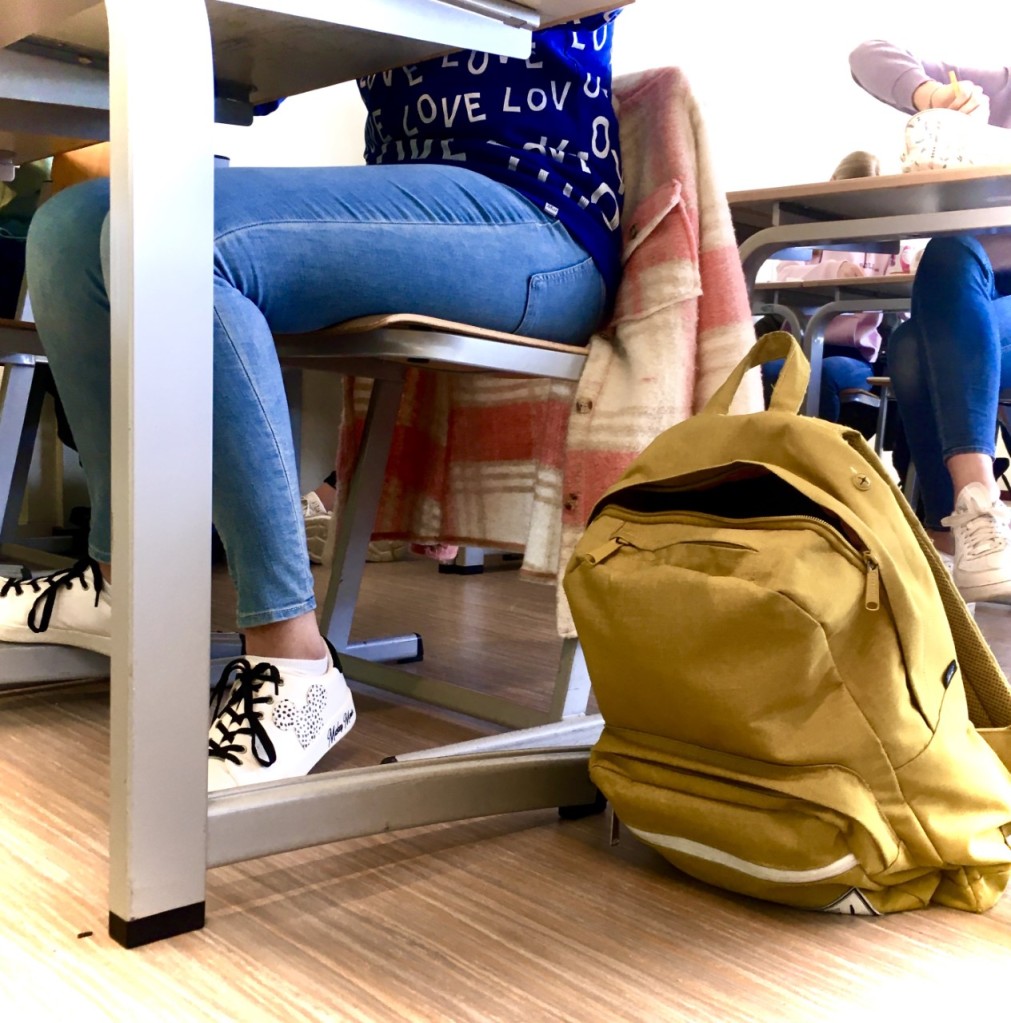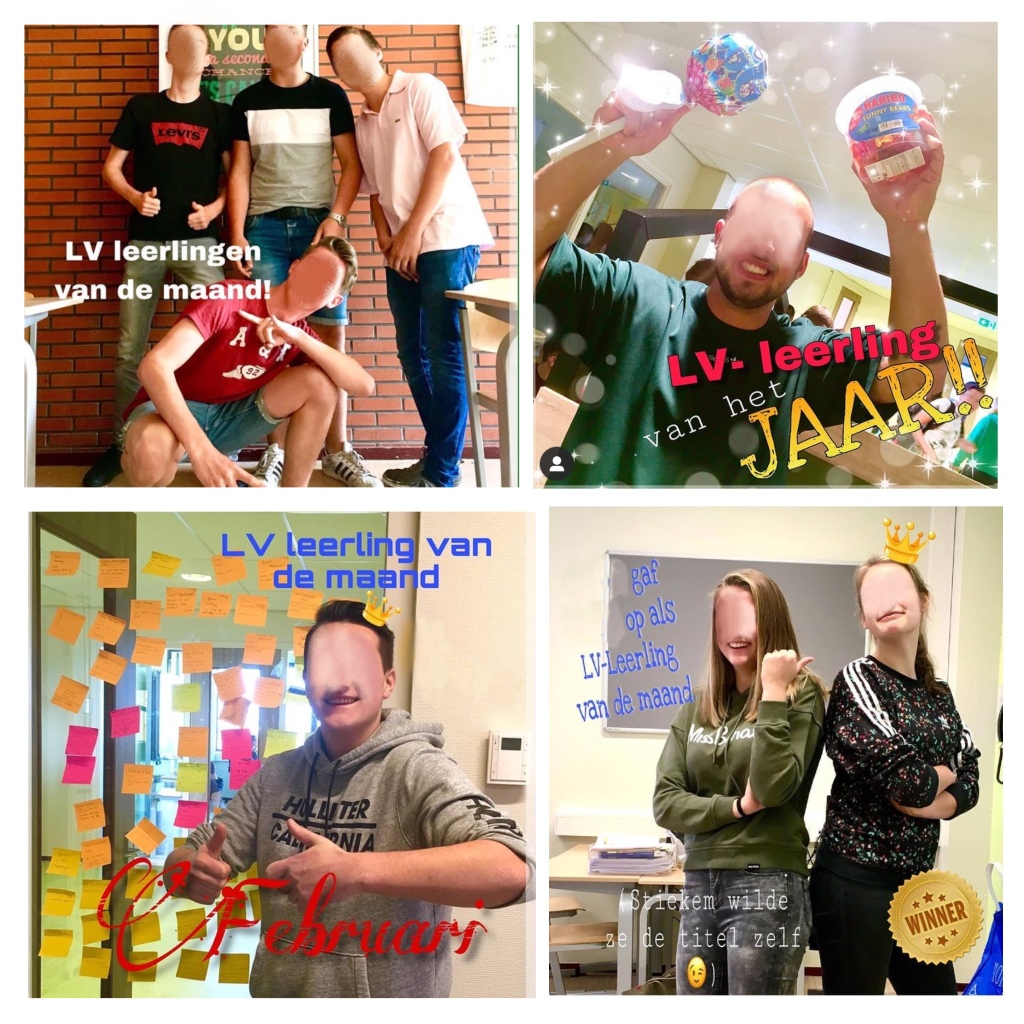(English: scroll down)
Mevrouw, ik ga dit nooit kunnen.’ ‘Dit red ik niet in een half uur!’
Mijn leerlingen zijn in een lichte shock. In Magister schreef ik dat we een toets zouden maken maar dat ze er niet voor moesten leren; ze zouden de toets zelf moeten ‘maken’ – als in ‘ontwerpen’. Desondanks was er een enkeling die zo onzeker werd dat hij ’s avonds toch nog een uur spendeerde om het hoofdstuk een keer extra door te spitten. Een ander kwam zenuwachtig de klas binnen ‘Mevrouw, ik snap het niet, hoe kunnen we een toets maken zonder te leren?’
Elke week zet ik keurig in Magister wat we elke les gaan doen, wat ze daarvoor nodig hebben, wat het huiswerk is enz. Maar blijkbaar was het deze keer niet helemaal duidelijk. Welke docent laat zijn leerlingen nu ook zelf de toets ontwerpen? Compleet onlogisch toch?
Nou, helemaal onlogisch vind ik het niet. Bij aanvang van de les stel ik ze gerust. “Vertrouw op mij, ik leg uit wat je moet doen, en ik help je het te kunnen.” De rust keert enigszins weer; dat zie ik aan de lijven die even wat meer ontspannen op hun stoel onderuit zakken. Ik leg uit wat het verschil is tussen kennisvragen en inzichtsvragen en wat een toepassingsvraag is … uiteraard met een grapje tussendoor. De klas moet gelukkig lachen (en nee, dat doen ze niet bij al mijn grapjes). Beetje bij beetje gaat de spanning eruit.
Met “Het is niet makkelijk, maar ik geloof echt dat je het kan.” eindig ik mijn pleidooi.
Vooraan zit er een dame die gelijk de schouders laat hangen. Ik zie vertwijfeling. Langzaam gaat de vinger omhoog.
“Mevrouw, ik ga dit nooit kunnen.”
“Ik denk van wel. Als je niet in jezelf gelooft, geloof dan in mij, en dat ik geloof dat jij het kan.” De vertwijfeling maakt een seconde lang ruimte voor een glimlach maar keert dan weer terug.
“Dit is een oefening.” Ga ik verder, “Het proces van dit te oefenen en te leren is belangrijker dan het resultaat. Durf het proces aan te gaan. Fouten maken mag. Ik geloof echt dat je het wel kan. Begin maar gewoon. Je mag me halverwege om hulp vragen en dan help ik je verder.” Vertwijfeling sluimert. Zachtjes vervolg ik “Nog voordat je het hebt geprobeerd zeggen dat je het niet kan is een soort van jezelf in de weg zitten. Zelf-sabotage. Gewoon durven en doen. Je kan het wel!” Een dapper knikje volgt.
Achterin verschijnt een nieuwe vinger “Mevrouw, dit red ik niet in een half uur”
“Ik denk van wel, maar neem je tijd en kijk maar hoe ver je komt.”
En dan komt de allerbelangrijkste vraag. Vanuit hun perspectief tenminste: “Mevrouw, is het voor een cijfer?”
“Moet dat? Ik denk dat jullie ook goed je best doen en er veel van leren wanneer het niet voor een cijfer is.”
“Dat denk ik ook, mevrouw” En in stilte begint de klas te werken.
(En ja ze konden het wel, ook binnen de gestelde tijd!)

Ma’am, I’m never going to be able to do this.” “I can’t make this in half an hour!”
My students are in mild shock. In the electronic learning environment I wrote that we would make a test but that they should not learn for it; they should “make” the test themselves – as in “design”. Nevertheless, there was a few who became so insecure and one still spent an hour in the evening to go through the chapter once more. Another one nervously entered the class “Madam, I don’t get it, how can we make a test without learning?”
Every week I neatly write what we are going to do each lesson, what they need for that, what the homework is, etc in the electronic learning environment. But apparently it wasn’t completely clear this time. What kinda teacher let students design a test themselves? Completely illogical right?
Well, I don’t think it’s completely illogical. I reassured them at the start of the lesson. “Trust me, I’ll explain what to do, and I’ll help you do it.” Peace returns somewhat; I can see that in the bodies that slump a bit more relaxed in their chairs. I explain the difference between knowledge questions and insight questions and what an application question is… of course with a joke in between. The class has to laugh happily (and no, they don’t do that with all my jokes). Little by little the tension disappears.
With “It’s not easy, but I really believe you can.” I end my plea.
In the front there is a lady who immediately lets her shoulders hang. I see despair. Slowly her hand goes up.
“Ma’am, I’m never going to be able to do this.”
“I think you are. If you don’t believe in yourself, then believe in me and that I believe you can do it. ” The despair makes room for a smile for a second, but then returns.
“This is an exercise.” I continue, “The process of practicing and learning this is more important than the outcome. Dare to take the trial. You can make mistakes. I really believe you can. Just start. You can ask me for help halfway through and I will help you. ” Despair lurks. Softly I continue, “Saying you can’t even before you’ve tried it is kind of getting in the way of yourself. Self-sabotage. Just dare and do. You can do it!” A brave nod follows.
In the back a new finger appears “Madam, I can’t make this in half an hour”
“I think so, but take your time and see how far you can get.”
And then comes the most important question. At least from their perspective: “Ma’am, are you giving it a grade? I don’t want to get a C or less.”
“Is it necessary that everything counts? I think you can also do the best you can and learn a lot from it when it is not for a grade.”
“I think so too, ma’am.” And the class begins to work in silence.
(And yes they could, even within the allotted time!)





